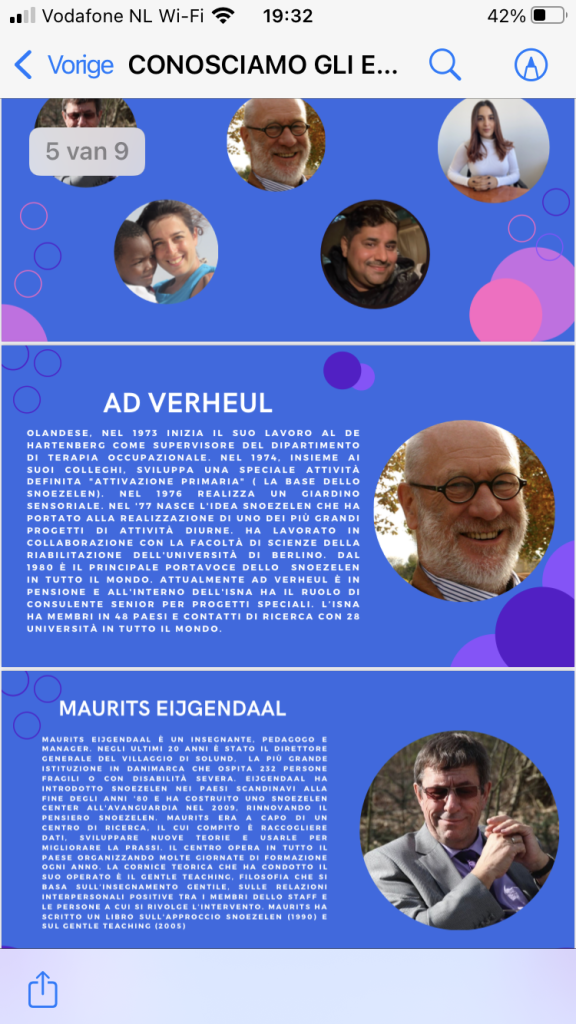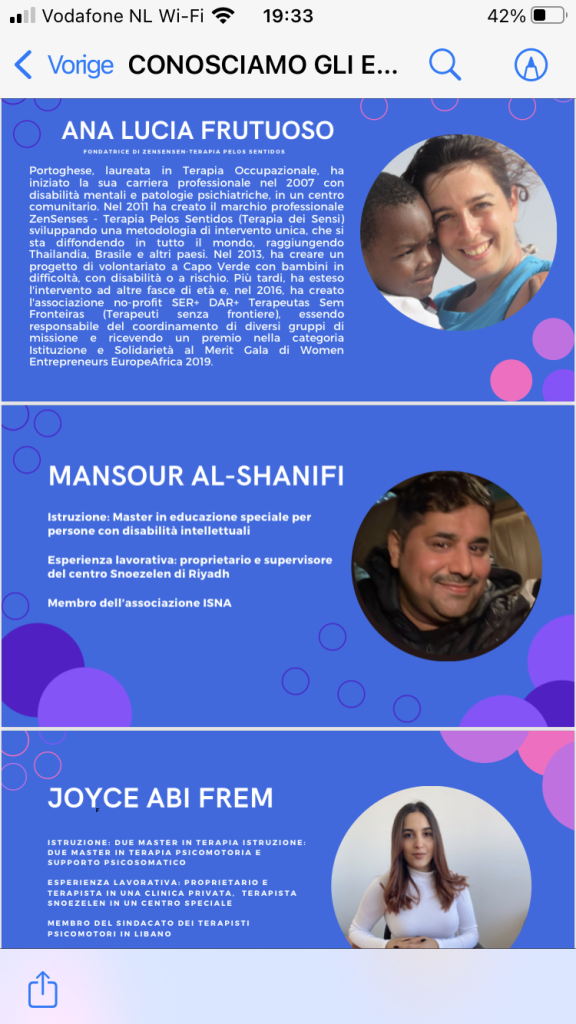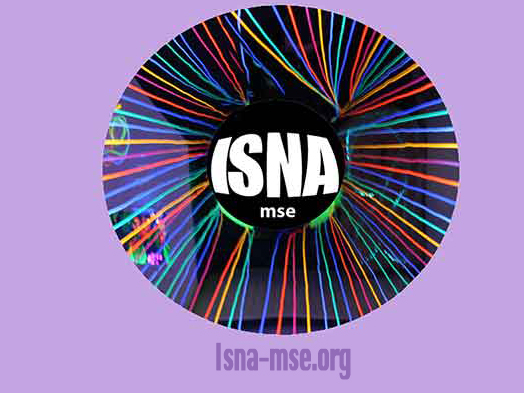

THE NETWORK THAT INTERSECTS RELATIONSHIPS AND KNOWLEDGE
ABSTRACT
A Network of Snoezelen Schools is born in Italy with the aim of spreading the culture of kindness, acceptance, loving-kindness towards oneself and others; to nurture authentic relationships and develop emotional intelligence and relational skills among the new generations. The snoezelen multisensory environments represent spaces that facilitate encounters with oneself and with the ‘other’, through controlled stimulation of the senses.
Keyword
On 27 May 2021, a national network of snoezelen schools will be officially established in Italy. The headmaster of the IC “Alessio Narbone”, the network’s lead school, Prof. Francesco Pignataro, after having launched an invitation to all Italian schools interested in the thought of otherness through the press and social media, in a public assembly in web conference mode, constitutes this body destined to grow. The Network is an organisational structure that creates connections between schools whose mission is to spread the snoezelen thought and philosophy within the school fabric. It comprises 37 schools of all levels spread throughout the country, from Piedmont to Sicily, from north to south.
In fact, the idea of a network came to light in 2016, when the ‘Alessio Narbone’ extended the use of the snoezelen space to all schools of all levels in the local area. The collaboration between teachers from different institutions brought out the need to understand the processes that took place inside the room. This led to the creation of the territorial network and then the opening to the national reality, with the aim of acquiring new experiences and opening up new spaces for comparison.
The Network’s objectives are:
Elaboration of shared tools to monitor processes
Creation of a showcase/virtual notice board of good practices
Organisation of training courses with experts in the field
Realisation of emotional paths
Implementation of cultural exchanges for the sharing of good practices
Creation of working groups
